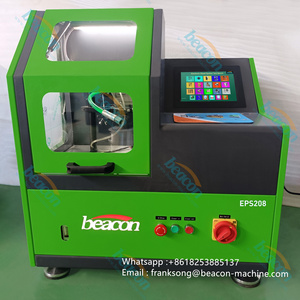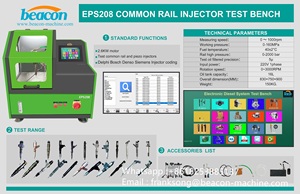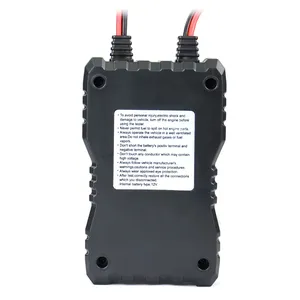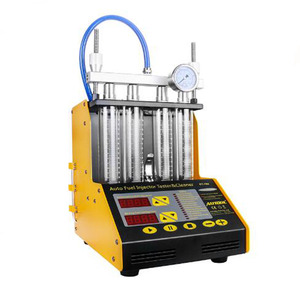(2063 products available)




















































































































































































An auto injector device is a medical device used to deliver a single dose of medication, often epinephrine, to individuals experiencing severe allergic reactions (anaphylaxis). The device is designed to be used by patients or caregivers with minimal training. There are several types of auto-injector devices, depending on the design features.
Spring-Loaded Injectors
Spring-loaded injectors are among the most common types of auto-injector devices, like EpiPen. The injectors have a spring mechanism that provides the force needed to inject the medication into the muscle. Typically, the device has two safety features to prevent accidental injections. One is a cover that shields the needle before and after use, while the other is a safety cap that keeps the needle tip away from the user's body. To use the injector, the user removes the cap and presses the device against the thigh. The force against the leg activates the spring mechanism, which pushes the needle to the skin and injects the medication.
Dual-Chamber Auto Injectors
Some medications require mixing two components just before administration to enhance their effectiveness or ensure their stability. Dual-chamber auto-injector devices are designed with two chambers, each containing one component of the medication. When the injector is activated, the chambers are connected, and the components mix. An example of a medication that may require dual-chamber auto-injectors is certain vaccines or emergency drugs like thrombolytics.
Variable-Dose Auto Injectors
Traditionally, auto-injector devices deliver a fixed dose of medication. Variable-dose auto-injectors allow healthcare providers to program the device to deliver a specific dose based on the patient's needs. These devices improve treatment precision, especially in pediatric patients or those with weight variations. Variable-dose auto-injectors also reduce medication waste since the dose can be adjusted to match the prescribed amount.
Customized Auto Injectors
Auto-injector devices are often designed for specific medications. However, some patients may require auto-injectors with customized features. For instance, a patient with arthritis may need an auto-injector with a modified mechanism for easier grip and activation. Similarly, patients with visual impairments may require injectors with enhanced visual indicators for dose preparation and activation. Customized auto-injector devices address the needs of specific patient populations, improving medication accessibility and adherence.
The specifications of the auto-injector device are designed to enhance its functionality and safety.
Device Design
The auto-injector is designed to be used quickly and easily in urgent situations. It has a visible dosage delivery point and a window that shows whether the injection has been given. It also has a lock system that prevents accidental activation and an audible click that alerts when the dosage has been delivered.
Activation Method
The activation method of auto-injectors is critical in ensuring the safety and effectiveness of the injection process. Different auto-injectors have various activation methods. Some have a single-step activation method, while others have a multi-step activation method. In multi-step activation methods, health care providers are involved in activating and preparing the auto-injector, offering an extra safety layer by preventing accidental activation.
Dosage
The dosage of medication delivered by auto-injectors is often available in various strengths. In cases of anaphylactic reactions, auto-injectors deliver epinephrine to counteract the severe allergic reaction. Depending on the severity of the reaction and the patient's weight, different strengths of epinephrine auto-injectors may be prescribed. For instance, pediatric patients may require lower dosages, while adult patients may need higher dosages.
Needle Size and Length
The needle size and length are important considerations when selecting an auto-injector. Needles with larger gauges may cause less pain during injection, while smaller gauges may cause more discomfort. Additionally, the length of the needle is crucial in determining the depth of drug delivery. Longer needles may be necessary for injecting into muscle tissue, while shorter needles may suffice for subcutaneous injections.
Maintaining auto-injector devices is crucial to ensure they remain functional and effective in emergency situations. Here are some key maintenance practices:
There are several factors that retailers need to consider when choosing auto injector devices for their stock. These include:
Type of Injection
The type of injection the auto-injector delivers is a key consideration. For instance, epinephrine auto-injectors are used for anaphylaxis treatment, while peptide auto-injectors can be used for various medications, including insulin or growth hormone.
Medication
Different auto-injectors are pre-filled with various medications to cater to specific medical needs. Retailers need to stock a variety of auto-injectors to meet the diverse needs of their clients. For instance, some injectors might contain epinephrine, while others have insulin or monoclonal antibodies.
Dosage
Auto injector devices come in different dosages to serve various patient populations. For example, the dosage for a pediatric auto-injector will be lower than that of an adult. Retailers should ensure to stock different auto-injector devices with varying dosages to allow for precise dosing and to minimize the risk of adverse effects.
Need for Reconstitution
Some auto-injector devices require the medication to be reconstituted before injection, while others come ready to use. Ready-to-use auto-injectors are more convenient and reduce the risk of errors associated with reconstitution, such as dosing mistakes or contamination.
Administration Sites
Different auto-injector devices are designed for injection into various body parts, such as the thigh, abdomen, or upper arm. Retailers should choose devices suitable for specific administration sites based on the medication and patients' preferences.
Need for Training
Some auto-injector devices require specific techniques for administration, while others have simple mechanisms. Those that require more complex administration techniques may need training for healthcare providers or patients. Retailers should consider the training needs associated with different devices.
Replacing an auto injector device, especially epinephrine injectors, can be very critical. They are used by people with serious medical conditions like severe allergies or anaphylaxis. Therefore, it is important that any replacement be done with care. The following steps offer a general guide on how to replace auto injector devices:
Q1: Can the auto-injector be used for any medication?
A1: No, the auto-injector device is designed for specific medications, like epinephrine for severe allergic reactions. Using it for other medications not pre-formulated for auto-injection can be dangerous.
Q2: Are there different sizes of auto-injectors?
A2: Yes, there are different sizes of auto-injecter devices. They come in various sizes to cater to different patient populations, such as children or adults, with different dose requirements.
Q3: How should an auto-injector be disposed of after use?
A3: After use, the auto-injector should be disposed of in a designated sharps container or according to local regulations for hazardous medical waste to prevent needle-stick injuries.
Q4: Can someone else use my auto-injector in an emergency?
A4: In an emergency, if someone is experiencing the same condition (like severe allergies) and requires the same medication, another person can use it. Always ensure to seek medical help immediately after use.
Q5: Does the auto-injector hurt?
A5: Using an auto-injector can cause a brief stinging or pinching sensation, but it is essential to inject quickly. The discomfort is usually much less than the potential harm of delaying treatment.